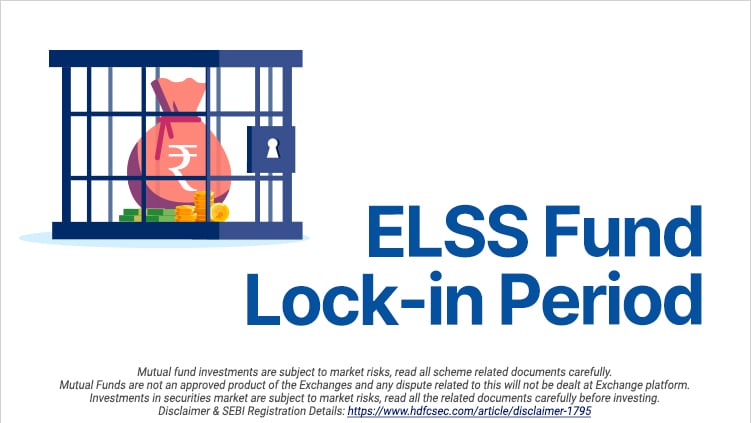What is ELSS lock-in period?
Equity Linked Saving Schemes (ELSS) have emerged as one of the most popular tax-saving investment options in India in recent years. ELSS offers tax benefits under section 80C of the Income Tax Act, 1961, while also providing the opportunity to earn market-linked returns. A majority of the fund corpus is invested in equity and equity-linked instruments.
One of the unique features of ELSS is its lock-in period, which is a mandatory period during which an investor cannot withdraw the investment. Let us explore the ELSS lock-in period in detail.
What is the ELSS lock-in period?
ELSS mutual funds lock-in period is the time period for which your equity fund investment stays locked in. You cannot redeem your mutual fund units during this lock-in period. All investment schemes classified under Section 80C follow a lock-in period. ELSS has the lowest lock-in period of three years, among all Section 80C schemes.
Lock in period is important for both investors and the investment vehicle. For investors, it ensures that they do not impulsively withdraw from the investment and helps them inculcate a long-term investment discipline, as they are encouraged to stay invested for a minimum period of three years.
Moreover, the long-term investment approach can help generate higher returns by allowing the investments to grow and compound over time. The lock-in period also helps reduce the volatility of the investment by preventing investors from withdrawing their funds during short-term market fluctuations.
How is the ELSS lock-in period calculated?
ELSS lock-in period is calculated from the purchase date of your mutual fund units. Your investment mode has a part to play here. With lumpsum investments, the same lock-in period date applies to all units. This is because you purchase all units together.
For instance, you made a lumpsum investment of Rs 1,00,000, and you buy 1,000 units in March 2023. All units will mature together on completion of three years i.e., in March 2026.
In the case of SIP investment, the lock-in period date is different for all units. This is because all mutual fund units are purchased at different time intervals. Given, this the units will mature subsequently.
Refer to the following table to understand the ELSS SIP investment lock-in period:
|
Date of purchase |
Lock in period ends on |
|
10 Jan 2023 |
10 Jan 2026 |
|
10 Feb 2023 |
10 Feb 2026 |
|
10 March 2023 |
10 March 2026 |
|
10 April 2023 |
10 April 2026 |
|
10 May 2023 |
10 May 2026 |
On completion of every unit’s lock-in period, you can choose to redeem the units or wait for all unit’s lock-in periods to complete and then redeem your investment.
What happens after the ELSS lock-in period is complete?
As mentioned, once the tax saver mutual fund lock-in period ends you can choose to redeem your investment and earn returns. You can also choose to continue holding your investment for a longer tenure if you want to.
The lock-in period for ELSS is a significant consideration for investors, as it can affect the liquidity of the investment and the ability to meet short-term financial needs.
Related Posts
Don't miss another Article
Subscribe to our blog for free and get regular updates right into your inbox.
Categories
newsletter
 HSL Mobile App
HSL Mobile App 



